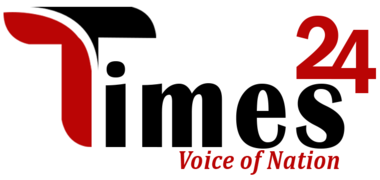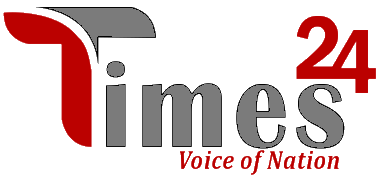In her final announcement of the Atmanirbhar Asian country package on Nov twelve, minister Nirmala Sitharaman declared that the “One Nation One identity card (ONORC)” theme currently covers sixty eight.8 large integer beneficiaries below the general public Distribution System (PDS) across twenty eight states and Union territories. The theme is touted as transferral inter-state movableness of ration to all or any PDS beneficiaries, considerably easing the method for migrant staff.
The ONORC was launched by the govt. in Gregorian calendar month 2019 with the aim of reforming the present system, wherever a PDS beneficiary might solely withdraw foodgrain from the fair-price search (FPS) wherever her identity card was labeled . before its launch, a replacement PDS movableness system known as Integrated Management of PDS (IMPDS) was unrolled in Gregorian calendar month 2018. The IMPDS permits PDS beneficiaries to withdraw their entitled foodgrain from any FPS, popularly referred to as a ration search. additionally, the Annavitran Portal allows beneficiaries to withdraw their entitled foodgrain from the FPS outside their district however within the same state.
Both the IMPDS and Annavitarn Portal determine beneficiaries through Aadhaar-based biometric identification (ABBA) on the electronic location machine put in at the ration search. The necessities for sleek transactions below the ONORC are: One, Aadhaar seeding of individual PDS beneficiaries with their ration cards; 2, electronic location machine at every truthful value shop; 3, IMPDS that acts as a centralised technological platform to create transactions attainable.
The use of Aadhaar to spot beneficiaries is an element of the core technological style. this can be not shocking — since the rollout of the National Food Security Act, 2013, the central government has been pushing the states to gather and seed the Aadhaar variety of individual PDS beneficiaries. The push to affix the ONORC is obvious from the mandate to all or any states to affix the network together of the preconditions for obtaining further credit to combat COVID-19 on the far side their financial Responsibility and Budget Management Act limit.
Has the ONORC served its purpose in Odisha and nationally? The central plan of the ONORC is to create the PDS fully moveable, and permit beneficiaries to elevate entitled ration from any a part of the country. The central government can deduct this ration from the quota of the house state and add it within the quota of the commerce state.
Odisha joined the ONORC bandwagon in Gregorian calendar month, however there’s no record of a dealing permitting associate Odia migrant to elevate her stock from another state, or any dealing in the least below this theme. Nationally, monthly transactions show twenty four,496 beneficiaries on three,515 cards WHO upraised their entitled ration from states aside from their home state. From Gregorian calendar month until Nov fifteen this year, merely 95,794 beneficiaries through twelve,846 ration cards have benefited. this can be atiny low fraction of the twenty two large integer PDS beneficiaries in India. it’s clear that despite tall claims, only a few beneficiaries have really benefited from the theme.
Intrastate movableness of ration transactions is far on top of interstate movableness. In Gregorian calendar month this year, 1.45 core transactions occurred through intrastate movableness, with a majority in province (42.5 lakh), Rajasthan (28.1 lakh), Bihar (22.6 lakh), state (11.5 lakh) and Telangana (11 lakh). Implementing ONORC inside a state doesn’t need any further arrangements because it follows already operational procedures of title and value.
Despite the Centre’s claims concerning the implementation of the ONORC over the past year, there’s no clarity on the operational procedures and beneficiary entitlements. as an example, every state features a completely different value and basket of entitlements. numerous operational factors like fixing of costs, entitlements and payments, and sharing of migrant information between states stay unaddressed. Would the rice-eating Odia get rice or wheat in a very wheat-providing state like Rajasthan? Would beneficiaries of state, WHO get ration freed from price, got to obtain receiving the ration in another state? Such essential queries stay unreciprocated.
Prior to Odisha change of integrity the theme, a movableness initiative was enforced on a pilot basis for ration-card holders in Bhubaneswar Municipal Corporation limits in September 2019. it’s not clear if there was associate analysis of the pilot since no findings concerning the pilot are discharged within the property right to the simplest of our data. when setting multiple deadlines, on September fifteen, 2019, the government declared that solely those beneficiaries whose Aadhaar was seeded with their identity card might elevate their entitled foodgrain through ABBA, albeit the seeding method has continuing thenceforth. consistent with reports within the media, over eighteen large integer beneficiaries lost their rights to withdraw foodgrain as their identity card wasn’t seeded with Aadhaar. it’s not clear what percentage might come back to into the system afterward. Beneficiaries are deleted albeit that they had Aadhaar cards however these weren’t seeded with their ration cards. necessary ABBA for retreating entitled ration had a damaging impact on explicit teams — the aged, the disabled, and therefore the physically incapacitated folks, WHO notice it tough to physically visit PDS retailers or whose fingerprints aren’t accurately scan by authentication machines.
It is essential that a close analysis of the ONORC is undertaken to handle the priority round the exclusion of beneficiaries with none proof to point the trade-offs of movableness. Going by the present proof, the ONORC seems to be additional rhetoric while not proportionate edges for migrant staff. The techno-solutionism of this government looks to mirror powerfully within the ONORC, which, while not correct implementation and analysis, looks to be inflicting bigger body burdens for beneficiaries instead of creating the system additional accessible.
Panda and Kumar square measure related to Odisha Right to Food Campaign. components of the authors’ analysis has been supported by the Centre for web and Society, India. Views square measure personal





